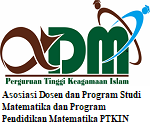Grouping of the Second Wave of Covid-19 Infection Areas in East Java Province Using K-Means Clustering
DOI:
https://doi.org/10.15642/mantik.2022.8.1.53-62Keywords:
Covid-19, K-Means Clustering, Grouping, East Java, Infection AreasAbstract
The second wave of Covid-19 Pandemic Attacks that occurred in June 2021 resulted in a drastic number of fatalities. This is due to reduced community responsibility, a sense of caring for each other, and a sense of mutual protection, resulting in the loosening of the health protocols implemented. There needs to be proper mitigation to handle the Covid-19 pandemic properly, one of which is by handling cases in each region with a low level of severity. With this grouping, it can provide a decision on which areas must be available in mitigating the Covid-19 pandemic. For grouping each region, the K-Means Clustering method can be used. From these clusters, there is one area with a severity level, eight areas with moderate severity, and 29 areas with low severity.
Downloads
References
H. Ritchie et al., “Coronavirus Pandemic (COVID-19),” OurWorLdInData.org., 2021. https://ourworldindata.org/coronavirus-data (accessed Jul. 23, 2021).
S. T. P. Covid-19, “Peta Sebaran Provinsi Jawa Timur,” Covid19.go.id, 2021. https://covid19.go.id/peta-sebaran (accessed Jul. 23, 2021).
“Pakar: Indonesia Menuju Puncak Gelombang Kedua Corona,” CNN Indonesia, Jakarta, Jun. 21, 2021.
S. T. P. Covid-19, “Peta Sebaran Nasional Per-Provinsi,” Covid19.go.id, 2021. https://covid19.go.id/peta-sebaran (accessed Jul. 24, 2021).
F. R. Makarim, “Gelombang Kedua COVID-19 Berpotensi Terjadi di RI, Apa Sebabnya?,” halodoc, 2021. https://www.halodoc.com/artikel/gelombang-kedua-covid-19-berpotensi-terjadi-di-ri-apa-sebabnya (accessed Jul. 23, 2021).
E. Parwanto, “Virus Corona (SARS-CoV-2) penyebab COVID-19 kini telah bermutasi,” J. Biomedika dan Kesehat., vol. 4, no. 2, pp. 47–49, 2021, doi: 10.18051/jbiomedkes.2021.v4.47-49.
I. Safutra, “PPKM Darurat Batasi Aktivitas Masyarakat di Jawa-Bali,” Jawa Pos, Surabaya, Jul. 02, 2021.
A. Faizal, “Surabaya Jadi Zona Hitam, Apa yang Terjadi?,” Kompas, Surabaya, Jun. 02, 2020.
A. Solichin and K. Khairunnisa, “Klasterisasi Persebaran Virus Corona (Covid-19) Di DKI Jakarta Menggunakan Metode K-Means,” Fountain Informatics J., vol. 5, no. 2, p. 52, 2020, doi: 10.21111/fij.v5i2.4905.
R. A. Indraputra and R. Fitriana, “K-Means Clustering Data COVID-19,” J. Tek. Ind., vol. 10, no. 3, pp. 275–282, 2020.
A. S. Ahmar, D. Napitupulu, R. Rahim, R. Hidayat, Y. Sonatha, and M. Azmi, “Using K-Means Clustering to Cluster Provinces in Indonesia,” J. Phys. Conf. Ser., vol. 1028, no. 1, 2018, DOI: 10.1088/1742-6596/1028/1/012006.
M. Azarafza, M. Azarafza, and H. Akgün, “Clustering method for spread pattern analysis of corona-virus (COVID-19) infection in Iran,” J. Appl. Sci. Eng. Technol. Educ., vol. 3, no. 1, pp. 1–6, 2021, DOI: 10.1101/2020.05.22.20109942.
M. C. Untoro, L. Anggraini, M. Andini, H. Retnosari, and M. A. Nasrulloh, “Penerapan metode k-means clustering data COVID-19 di Provinsi Jakarta,” Teknologi, vol. 11, no. 2, pp. 59–68, 2021, doi: 10.26594/teknologi.v11i2.2323.
J. Hutagalung, N. L. W. S. R. Ginantra, G. W. Bhawika, W. G. S. Parwita, A. Wanto, and P. D. Panjaitan, “COVID-19 Cases and Deaths in Southeast Asia Clustering using K-Means Algorithm,” J. Phys. Conf. Ser., vol. 1783, no. 1, 2021, DOI: 10.1088/1742-6596/1783/1/012027.
S. Harini, “Identification COVID-19 Cases in Indonesia with The Double Exponential Smoothing Method,” J. Mat. Mantik, vol. 6, no. 1, pp. 66–75, 2020, DOI: https://doi.org/10.15642/mantik.2020.6.1.66-75.
M. A. Ramadhan, Efendi, “Perbandingan K-Means dan Fuzzy C-Means untuk Pengelompokan Data User Knowledge Modeling,” in Seminar Nasional Teknologi Informasi, Komunikasi dan Industri (SNTIKI) 9, 2017, pp. 219–226.
A. Chusyairi and P. R. N. Saputra, “Perbandingan Algoritma Fuzzy C-Means Dan K- Means Clustering Dalam Pengelompokan Data Puskesmas,” in Conference on Information Technology, Information System and Electrical Engineering (CITISEE 2019), 2019, no. June, pp. 1–6.
A. Bastian, H. Sujadi, and G. Febrianto, “Penerapan Algoritma K-Means Clustering Analysis Pada Penyakit Menular Manusia (Studi Kasus Kabupaten Majalengka),” J. Sist. Inf., vol. 14, no. 1, pp. 26–32, 2018.
M. Zubair, M. Asif Iqbal, A. Shil, E. Haque, M. Moshiul Hoque, and I. H. Sarker, “An Efficient K-Means Clustering Algorithm for Analysing COVID-19,” Adv. Intell. Syst. Comput., vol. 1375 AIST, pp. 422–432, 2021, DOI: 10.1007/978-3-030-73050-5_43.
M. Fajar, “Modeling of COVID-19 Epidemic Growth Curve in Indonesia,” J. Mat. Mantik, vol. 7, no. 1, pp. 67–73, 2021, doi: https://doi.org/10.15642/mantik.2021.7.1.67-73.
D. Abdullah, S. Susilo, A. S. Ahmar, R. Rusli, and R. Hidayat, “The application of K-means clustering for province clustering in Indonesia of the risk of the COVID-19 pandemic based on COVID-19 data,” J. Qual. Quant., no. 0123456789, 2021, DOI: 10.1007/s11135-021-01176-w.
D. N. Sari and I. Yunita, “Tingkat Keparahan Dan Risiko Penyebaran Covid-19 Di Indonesia Dengan Menggunakan K-Means Clustering,” in Seminar Nasional Official Statistics, 2019, pp. 210–216, doi: 10.34123/semnasoffstat.v2020i1.706.
F. Virgantari and Y. E. Faridhan, “K-Means Clustering of COVID-19 Cases in Indonesia ’ s Provinces,” in Proceedings of the International Conference on Global Optimization and Its Applications Jakarta, 2020, pp. 1–7.
A. Mahmudan, “Clustering of District or City in Central Java Based COVID-19 Case Using K-Means Clustering,” J. Mat. Stat. dan Komputasi, vol. 17, no. 1, pp. 1–13, 2020, doi: 10.20956/jmsk.v17i1.10727.
A. Ali, “Klasterisasi Data Rekam Medis Pasien Menggunakan Metode K-Means Clustering di Rumah Sakit Anwar Medika Balong Bendo Sidoarjo,” MATRIK J. Manajemen, Tek. Inform. dan Rekayasa Komput., vol. 19, no. 1, pp. 186–195, 2019, doi: 10.30812/matrik.v19i1.529.
M. S. Yana, L. Setiawan, E. M. Ulfa, and A. Rusyana, “Penerapan Metode K-Means dalam Pengelompokan Wilayah Menurut Intensitas Kejadian Bencana Alam di Indonesia Tahun 2013-2018,” J. Data Anal., vol. 1, no. 2, pp. 93–102, 2018, doi: 10.24815/jda.v1i2.12584.
Downloads
Published
How to Cite
Issue
Section
License
Copyright (c) 2022 Fadilah Akbar, Edo Leonardo Dekapriyo, Achmad Murtafi Haris, Agoes Moh. Moefad

This work is licensed under a Creative Commons Attribution-NonCommercial-ShareAlike 4.0 International License.
- Authors retain copyright and grant the journal right of first publication with the work simultaneously licensed under a Creative Commons License that allows others to share the work with an acknowledgment of the work's authorship and initial publication in this journal.
- Authors are able to enter into separate, additional contractual arrangements for the non-exclusive distribution of the journal's published version of the work (e.g., post it to an institutional repository or publish it in a book), with an acknowledgment of its initial publication in this journal.
- Authors are permitted and encouraged to post their work online (e.g., in institutional repositories or on their website) prior to and during the submission process, as it can lead to productive exchanges, as well as earlier and greater citation of published work







.png)




